
The South African Army is the principal land warfare force of South Africa, a part of the South African National Defence Force (SANDF), along with the South African Air Force, South African Navy and South African Military Health Service. The Army is commanded by the Chief of the Army, who is subordinate to the Chief of the SANDF.

The Bofors 40 mm Automatic Gun L/60 is an anti-aircraft autocannon, designed in the 1930s by the Swedish arms manufacturer AB Bofors. The gun was designed as an intermediate anti-aircraft gun, filling the gap between fast firing close-range small calibre anti-aircraft guns and slower firing long-range high calibre anti-aircraft guns. The Bofors 40 mm L/60 was for its time perfectly suited for this role and outperformed competing designs in the years leading up to World War II in both effectiveness and reliability.
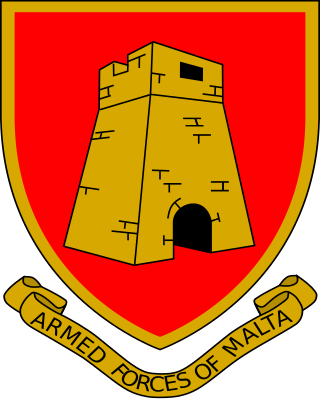
The Armed Forces of Malta is the name given to the combined armed services of Malta. The AFM is a brigade sized organisation consisting of a headquarters and three separate battalions, with minimal air and naval forces. Since Malta is the guardian of the European Union's southernmost border, the AFM has an active role in border control.

The Oerlikon GDF or Oerlikon 35 mm twin cannon is a towed anti-aircraft gun made by Oerlikon Contraves. The system was originally designated 2 ZLA/353 ML but this was later changed to GDF-001. It was developed in the late 1950s and is used by around 30 countries.

The Sandfontein Artillery Regiment is a reserve artillery regiment of the South African Army.

The South African Army Artillery Formation is the controlling entity of all South African Army artillery units. It draws much of its history from the South African Artillery, established in 1934 but with roots that reach back to 1921. The formation consists of both regular and reserve units. There is a separate South African Army Air Defence Artillery Formation that directs army anti-aircraft warfare units.

The Sri Lanka Artillery (SLA) is the artillery arm of the Sri Lanka Army. It is made up of ten regular regiments and two volunteer regiments. The SLA is headquartered at Panagoda Cantonment, Panagoda.
1st Anti-Aircraft Brigade was an Air Defence formation of the British Army, during the Second World War, and served in the Battle of France and during The Blitz. It then transferred to the Middle East, where it defended the Eighth Army's lines of communication during the final phases of the North African Campaign.

The South African Army Air Defence Artillery Formation is the controlling entity of all South African Army Air Defence Artillery units. This Formation consists of both regular and reserve units.

7 South African Infantry Division was a formation of the South African Army, active from the 1960s to 1999.

The OR Tambo Regiment is a reserve infantry regiment of the South African Army.
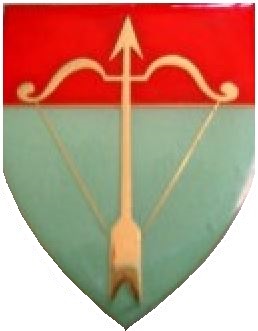
The Sekhukhune Anti-Aircraft Regiment is an air defence regiment of the South African Army. It is part of the South African Army Air Defence Artillery Formation. It is located in Johannesburg.

7 Light Anti-Aircraft Regiment is a reserve force regiment of the South African Army Air Defence Artillery Formation.
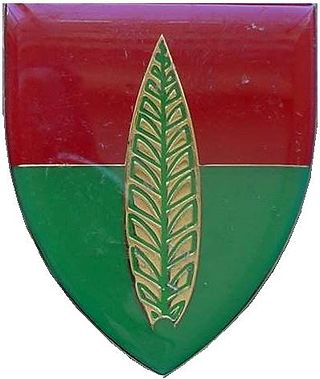
10 Anti-Aircraft Regiment is an anti-aircraft artillery regiment of the South African Army.

Galeshewe Anti-Aircraft Regiment is a reserve air defence artillery regiment of the South African Army.
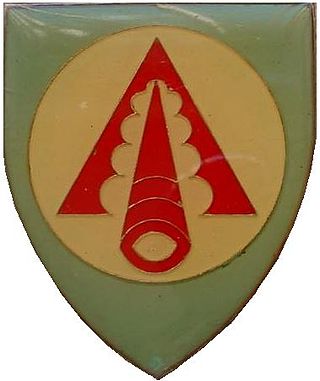
Regiment Overvaal is a reserve force regiment of the South African Army Air Defence Artillery Formation.
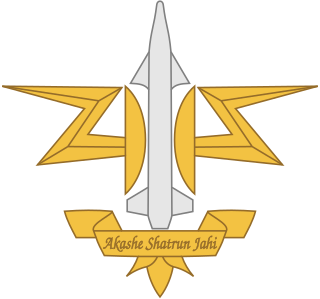
The Corps of Army Air Defence, is an active corps of the Indian Army and a major combat support arm tasked with air defence of the country from foreign threats. The AAD is responsible for the protection of Indian air space from enemy aircraft and missiles, especially below 5,000 feet.

The 1st Regiment is a light infantry battalion of the Armed Forces of Malta. The Regimental Headquarters is at Lyster Barracks in Ħal Far. Lyster Barracks was a former Royal Navy and Royal Air Force barracks and originally named after Vice Admiral Sir Arthur Lumley St George Lyster. Admiral Lyster commanded the Fleet Air Arm force that protected the Operation Pedestal convoy force to Malta during World War 2. The current barracks site includes some of the original British military architecture and four of the accommodation blocks are named after famous Royal Navy aircraft carriers, some of whom were frequent visitors to Malta; i.e. Glorious, Courageous, Eagle and Hermes

The 120th Light Anti-Aircraft Regiment, was an air defence unit of the British Army's Royal Artillery during World War II. It landed on D-Day and saw action throughout the campaign in North West Europe, defending the vital Scheldt Estuary until the end of the war.

15th Anti-Aircraft Brigade was an air defence formation of the Royal Artillery which saw service during the middle years of the Second World War. The brigade was formed in Gibraltar to control those anti-aircraft (AA) units based there and disbanded shortly after the air threat had been diminished in 1944. The brigade was later reformed in 1947 as part of the post-war regular army, but disbanded in 1957 following the end of the AA era.





















